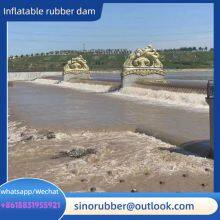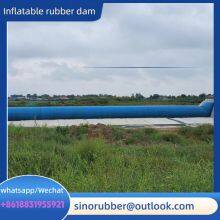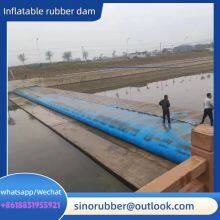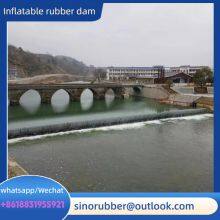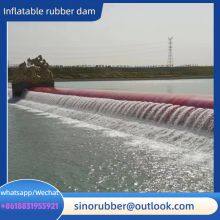Composition of Inflatable Rubber Dams An inflatable rubber dam is a flexible water conservancy facility that forms a Water-filled rubber dams, also known as inflatable rubber dams, are innovative and flexible hydraulic structures widely used in water resource management, irrigation, flood control, and urban water systems. Constructed primarily from high-strength synthetic rubber fabrics—reinforced with layers of polyester or nylon cords for enhanced tensile strength and durability—these dams consist of several key components: a flexible rubber dam bag (the main water-retaining structure), anchoring systems (to secure the bag to the riverbed or channel banks), and a water filling/draining system (pumps, pipes, and valves for controlling the dam's inflation and deflation). The operational principle is simple yet effective: when filled with water (typically from the adjacent water body or an external source), the rubber bag expands vertically and horizontally, forming a stable barrier that raises the water level upstream. This allows for water storage, flow regulation, or diversion for irrigation, industrial use, or municipal supply. When the stored water needs to be released—such as during floods or maintenance—the dam is deflated by draining the water from the bag, causing it to collapse flat against the riverbed, minimizing obstruction to natural water flow.


Send Inquiry to This Supplier
You May Also Like
-
Inflatable and Water-filled Rubber Dam for River Waterproofing and Landscape Water ControlUS$ 290 - 300MOQ: 20 Meters
-
Inflatable Rubber Dam, Custom 7.5-meter-high Rubber Water Dam, Seamless JointUS$ 290 - 300MOQ: 20 Meters
-
Durable Inflatable Rubber Dam for Agricultural/Flood ControlUS$ 290 - 300MOQ: 20 Meters
-
Water Injection Boom Reusable Inflatable Rubber Flood Dam Inflatable Water Filled Tube Flood BarriersUS$ 290 - 300MOQ: 20 Meters
-
Factory Directly Sale Inflatable Waterproof Dam Flood Dam Protection Water Stop Rubber DamUS$ 290 - 300MOQ: 20 Meters
-
High-Quality Finest Price Inflatable Air Filled Rubber Dam for IrrigationUS$ 290 - 300MOQ: 20 Meters
-
Lightweight Inflatable Rubber Dam With Polyester Reinforcement for Industrial Water RetentionUS$ 290 - 300MOQ: 20 Meters
-
High-Pressure Waterproof Rubber Dam for Pressure Vessel Sealing & Industrial Water RetentionUS$ 290 - 300MOQ: 20 Meters
-
Environmentally Friendly Rubber Dam for River Water Flow RegulationUS$ 290 - 300MOQ: 20 Meters
-
Direct Manufacturer Rubber Dam Industrial-Grade Inflatable Rubber Dam for Crop Irrigation & Livestock Water Supply - Strength FactoryUS$ 290 - 300MOQ: 20 Meters


